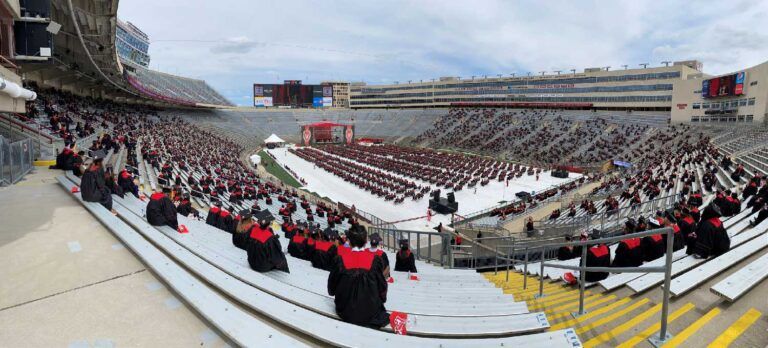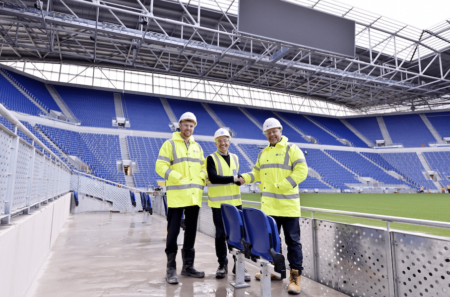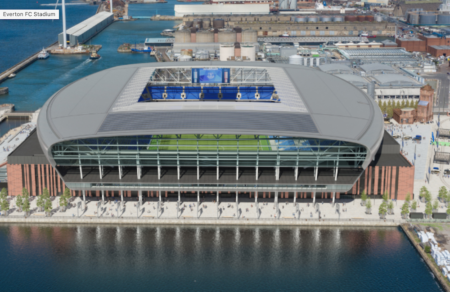As fans return to more live events, venue optimization software can help stadiums, arenas and other venues optimize attendance and create a safer fan experience. For example, the University of Wisconsin-Madison Department of Athletics used SAS for venue optimization to determine socially distanced seating layouts for commencement ceremonies at Camp Randall Stadium, home of Wisconsin Badgers football.
Analytics leader SAS has consulted with athletic organizations around the world on how best to plan seating at stadia and other venues amid Covid-19 restrictions.
“An in-person commencement was an important milestone for our university. Creating a memorable experience while supporting the safety of our graduates, faculty and operations staff required significant flexibility and planning,” said Daron Jones, Wisconsin Athletics director of external engagement. “SAS was the right partner to work with on this venue seating optimization effort. They collaborated with us step-by-step while tailoring a comprehensive seating optimization plan specific to all of the unique aspects of Camp Randall Stadium, and completed the project in a short amount of time.”
SAS for venue optimization uses models and data visualization to provide an ideal seating layout based on a set of ticketing and social distancing parameters and objectives entered by the user. Wisconsin’s two ceremonies, one for undergraduates and another for graduate degree candidates, were limited to participants only. However, even a venue as large as Camp Randall Stadium was challenged to accommodate graduates when allowing for six feet of social distancing.
Attendees were seated in the lower bowl and throughout field level sections of the stadium. Potential ceremony participants were sent seating request surveys to accommodate, as best as possible, groups who want to sit together. The SAS venue optimization models included factors such as results of the seating request survey, with a minimum of one and maximum of four graduates in each “pod’ with six feet of distance between pods. It also added blocking of four aisle seats in each section, which allows people to more safely maneuver up and down the aisles and sections.
SAS worked with the university’s athletics department to quickly perform the analysis using SAS Results, a flexible model where SAS analytics experts tackle a specific, limited business challenge. Data visualization showed the Wisconsin athletic department what the stadium seating arrangements would look like on graduation day. The athletic department was able to easily upload the venue optimization results into its ticketing system, Paciolan, for fulfillment.
“SAS is grateful to play a part in helping higher education institutions and live event venues around the world reopen safely”, said Dan Axman, SAS senior sports analytics adviser. “SAS in partnership with the University of Wisconsin athletics department were able to demonstrate the importance of using data, advanced analytics and optimization to solve a challenging problem, and most importantly, to provide an opportunity for graduates to attend their commencement in person.”
SAS for venue optimization offers a way to quickly run seating and attendance simulations to maximize ticket sales, revenues and attendance while supporting fan safety.
SAS worked with North Carolina State University for its 2020-21 season to run scenarios for objectives, including total attendance, revenue, percentage of capacity and fixed number of seats, for the 57,600 seat Carter-Finley Stadium. SAS for venue optimization was used to run seating models for different hypotheticals, helping NC State plan for ticketing and optimal attendance.
The optimization analyses consider data such as aisle and row dimensions, seat and bench sizes, general admission or lawn seating dimensions and seat pricing. Users can choose the distance between seat groupings and/or the maximum group size of people sitting together, which can result in big differences.
SAS for venue optimization can run scenarios where aisle entrances and exits are left open, which allows people to reach or leave their seats without crossing anyone else’s safety zone within the seating area. Scenario results are presented in easy-to-understand data visualizations. For instance, by entering ticket prices for all seats within a venue, users can see a seat allocation plan based on maximum revenue optimization.





